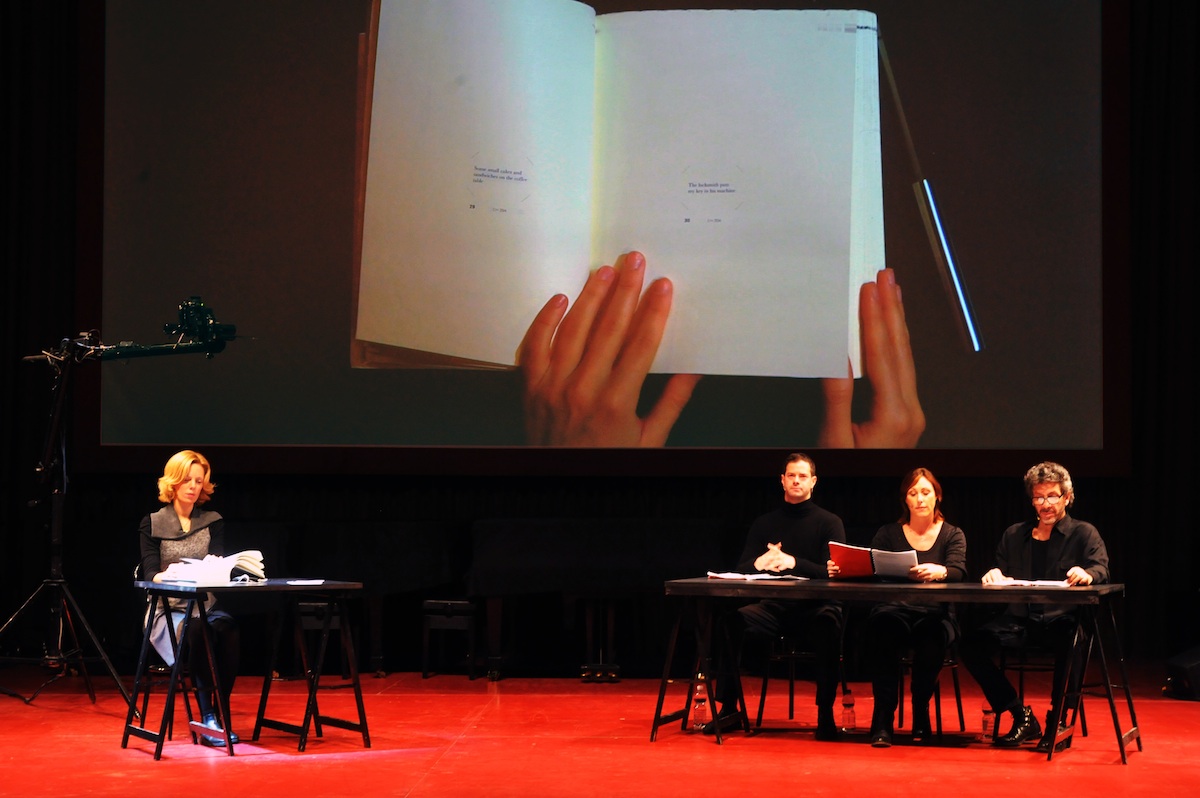About Latent Images is the last part of the Wonder Beirut project The three images of the drawers represent part of the rolls of films shot by the photographer Abdallah Farah but not developed yet. Since the war years, when he was often short of products, fixatives and most of all paper, he stopped developing his films, being content with taking the pictures. The rolls piled up, he felt no need to reveal them. Even today, although the situation has improved, he still does the same. If he does not develop the rolls, he nevertheless documents each photograph he takes in a small notebook. He describes it minutely. His pictures can therefore be read, giving free rein to the reader’s imagination. He defines this work as the invisible image or the image in the text; we prefer calling it Latent images.
Description of the Performance Latent Images is the last part of the Wonder Beirut project, based on an imaginary character, that of a Lebanese photographer, Abdallah Farah. Latent Images are the result of a habit which Abdallah acquired during the war years when he was often short on products, fixatives and paper. He stopped developing his films, being content with simply taking pictures. The reels piled up; he felt no need to reveal them. For years, although the situation has improved, he continued to do the same. If he did not develop the rolls, he nevertheless dated and indexed each film, and documented each photograph he took in a small notebook. He described it minutely. His pictures can therefore be read, giving free rein to the imagination of the reader who can navigate freely across this photographic fragments and invent his own occurrences through the story of Abdallah Farah. Displayed as contact sheets, the rolls of latent films form a personal diary and a photographic chronicle into the history of contemporary Lebanon. The artist book A selection of latent images is presented in a limited edition of art books, published by Rosascape: Latent images, Diary of a photographer. The book consists of 1312 pages and includes 38 contact sheets selected among the hundreds of films shot by Abdallah Farah between 1997 and 2006, which he never developed. Each film can be read and seen in the form of a chapter: an original photo of these rolls appears at the beginning of the chapter, recalling the presentation of photos in family albums. The description of the images replaces the photographs, short fragments of text describe invisible images while creating a new imaginary space through sealed notebooks, which prevent the images they contain being read unless the pages are cut. The performance Joana Hadjithomas and Khalil Joreige imagined later a reading-performance based on the book. They invite 4 actors to activate the book Latent images, Diary of a photographer. One person is entrusted with cutting and separating the pages, while synchronising with the three other actors who will be reading the images. The reading of the book is somehow a new form for the latent images and transfer this work into the field of oral expression. The actors will work in shifts to present, in multiple voices, the whole collections of texts of the book Latent Images. In doing so, they will echo the multiple narratives relating the point of view of Abdallah Farah, his relation to analog photography, his mixed feelings of enthusiasm and disenchantment, and his lost love but also the transformations in the city, the important political changes of those years as well as a deep relation to visible and invisible traces, memories and history. During the Venice biennale, every day, in the arena in the Giardini, a book was opened and read from beginning to end by 4 actors. 177 books, equivalent to the number of working days of the Biennale, had thus been revealed, read and shared with the audience. 177 days and so 177 books. The performance lasts about two hours (there may be two per day, which means opening and reading two books every day). A camera registers the opening of the book by the actors and retransmits it on a screen. In front of this screen, three actors on a stage take turns reading the entire book as the pages appear on the screen behind them. The installation They are surrounded by the books that are all present in the space of the collective exhibition, on one side the books not yet opened or read, on the other the books already read, thus forming a progressive cycle, a strong and significant presence in space. It is like a time line of the biennale. Little by little, the book will all be read, the texts is floating in the exhibition space. A video of the cutting of one book (a close up on the book being cut with the voices of the actors recorded) is also presented aside with the installation on a flat screen.



